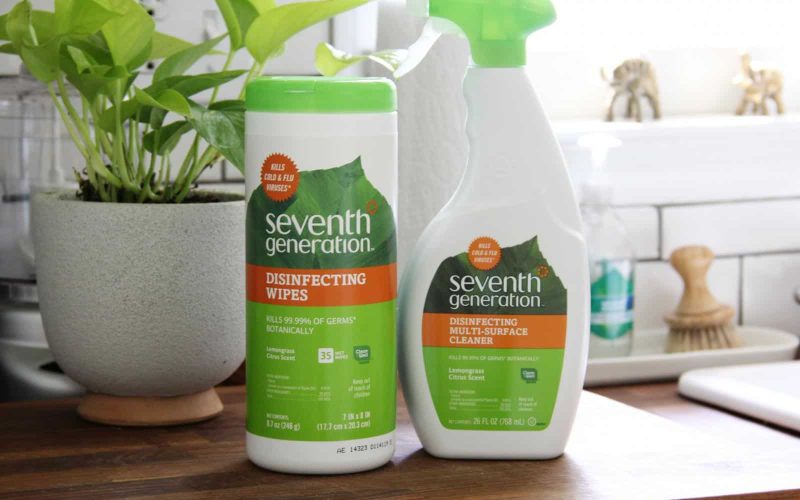Microorganisms are microscopic living things that surround us. They include viruses, bacteria, fungi, and protozoa that are part of the ecosystem.
Microorganisms have many benefits to humans. They are used in the food industry for the fermentation of milk to make cheese and yogurt; they are used in the bioremediation of polluted soil to break down contaminants; they are also responsible for the laboratory preparation of many drugs.
However, microorganisms have numerous harmful effects. They are the cause of many diseases like malaria, cholera, tuberculosis, HIV, and a host of other disorders. They are also used in biological warfare and bioterrorism.
Microorganisms are the causal agents for many plant and animal diseases, which leads to the economic loss of agricultural produce.
Eliminating the harmful effect of microorganisms involves many methods, sometimes working individually or in combination with other methods. One of the ways by which you can get rid of microorganisms is by using antimicrobials.
Antimicrobials are a broad group of substances and agents that are used to kill microorganisms. They are classified according to their spectrum of activity, the effect they have on microorganisms, and their mode of action.
For instance, antifungals are used against fungi, and antibiotics are used to kill bacteria.
The application of antimicrobials in medicine is known as antimicrobial chemotherapy, while its use in the prevention of diseases is called antimicrobial prophylaxis.
History of Antimicrobials
The use of antimicrobials for the treatment of infections of plants, humans, and animals has been practiced for nearly 2000 years.
Ancient Greeks and Egyptians used certain types of fungi to treat infections. Indigenous populations in Africa and Asia employed the use of leaves, roots, and saps of various plants for the treatment of various diseases.
In the 1800s, the antagonism between certain types of bacteria was observed by microbiologists, Louis Pasteur and Jules Francois Joubert. Pasteur’s work in fermentation led to the differentiation between aerobic and anaerobic bacteria.
Data from these experiments led to the implementation of antiseptic methods like the sterilization of surgical tools and the cleaning of wounds with alcohol.
These antiseptic methods reduced the incidence of infection and eventual death associated with surgical procedures
It also led to the development of vaccines for life-threatening diseases like Rabies and Anthrax. In 1928, Alexander Fleming discovered that the fungus Penicillium rubens had antimicrobial properties.
This resulted in the development of penicillin and earned him a Nobel Prize in medicine in 1945.
Types of Antimicrobials
Antivirals
These are drugs produced explicitly for the treatment of viral infections. They are usually harmless to the host but cause damage to the virus. They are different from viricides, which destroy viral cells outside the host.
Antivirals are made to treat infections caused by retroviruses such as HIV, Herpes Virus, Hepatitis, and Influenza A and B.
Antibacterials
As the name implies, antibacterials are used to treat infections caused by bacteria. They are generally not toxic to humans and animals, although prolonged use may decrease the amount of gut flora, which may have an adverse effect on health.
Antibacterials are the most commonly used drugs, but they are also the most frequently abused by medical professionals and patients alike.
This misuse has resulted in an increased resistance by bacteria over the years, and this is a serious threat to public health around the world.
This issue of antibacterial resistance demands that renewed efforts to be made to find antibacterial agents powerful enough to counter the increasing incidence of resistance.
Antifungals
Antifungals are used to eliminate or inhibit the growth of fungi. They are used in the treatment of fungal infections like ringworm, candida, athlete’s foot, and thrush and work by exploiting the differences between fungal and mammalian cells.
They get rid of the fungal organisms without having any adverse effects on the host. Fungal cells are more difficult to attack because they are similar to human cells on a molecular level, compared to antibacterials.
Antifungals are also used in the control of mold growth in damp home materials. For example, a solution of baking soda (Sodium bicarbonate) and water when sprayed on surfaces acts as an antifungal.
Additionally, some paints are manufactured with antifungal agents that are used in areas with high humidity, such as kitchens and bathrooms. Other antifungal agents usually contain copper, zinc, or silver – metals known to suppress the growth of molds.
What are Disinfectants?
Disinfectants are antimicrobial agents that, when applied to the surface of non-living things, eliminate microorganisms living on them.
The application of disinfectants does not necessarily destroy all the microorganisms, a less effective than sterilization which kills all types of life regardless of its level of resistance.
Disinfectants differ from antibiotics and antiseptics. Antibiotics destroy microorganisms in the body while antiseptics destroy microorganism kill microorganisms on living tissue. Disinfectants work by destroying the cell walls of microorganisms or by chemically interfering with their metabolic processes.
Types of Disinfectants
Alcohols
Medically, alcohol refers to two water-soluble compounds – isopropyl alcohol and ethyl alcohol – which have low germicidal properties.
Alcohol acts on fungi, bacteria, and viruses by denaturalizing the proteins in them. A mixture of water and absolute alcohol denatures the proteins present in the microorganisms.
Alcohols are not recommended in the sterilization of surgical tools due to their low germicidal properties. They are, however, used to disinfect rectal and oral thermometers, scissors, and stethoscopes.
Formaldehyde
This chemical is used as both a disinfectant and a sterilizer in both its liquid and gaseous states. It is sold mainly as a water-based solution known as formalin, which contains 37 percent formaldehyde.
The aqueous solution is used to kill bacteria, fungi, spores, and viruses. Formaldehyde works by alkylating the amino and sulfhydryl groups of proteins and the nitrogen atoms in purine bases. This renders the microorganism inert.
Although formaldehyde is a high-level disinfectant and also a sterilizer, its use in healthcare is limited due to its irritating fumes and pungent odor. It has also been linked to lung and nasal cancer.
Formaldehyde is also used in the preparation of viral vaccines such as diseases such as poliovirus and influenza. It is used as an embalming agent and for the preservation of anatomic species.
Aqueous formaldehyde solution is used to disinfect the internal fluid pathways of a dialysis machine.
Chlorine Compounds
Hypochlorites are one of the most commonly used chlorine disinfectants. They are available in solids such as calcium hypochlorite, and liquids such as sodium hypochlorite. The household bleach is made up of an aqueous solution of sodium hypochlorite.
Hypochlorites are fast-acting, cheap, do not leave any toxic residues, and are unaffected by hard water. They also have a low incidence of toxicity compared to other types of disinfectants.
However, sodium hypochlorite has a peculiar odor and can cause irritation to the eyes. Another disadvantage of hypochlorites is that they are corrosive to metals in high concentrations. They, however, do not have an adverse effect on the environment
Hypochlorites are commonly used in medical facilities for a variety of purposes. They are used to disinfect medical tools and for cleaning floors and countertops.
They are also used or the decontamination of blood spills. Other uses in medicine include the application of hypochlorites as a disinfectant in laundry, dental appliances, and water distribution systems in hemodialysis centers.
Chlorine has long been used in the treatment of water as a disinfectant. Municipal wastewater treatment plants employ the use of monochloramine for water disinfection.
In households, it is used in laundry and as a bleaching agent and also used to clean areas particularly prone to microbial growth such as kitchens and bathrooms.
Hydrogen Peroxide
Hydrogen peroxide is an effective disinfectant that can be applied on the surfaces of non-living objects. It is in disinfecting fabrics, ventilators, and endoscopes.









